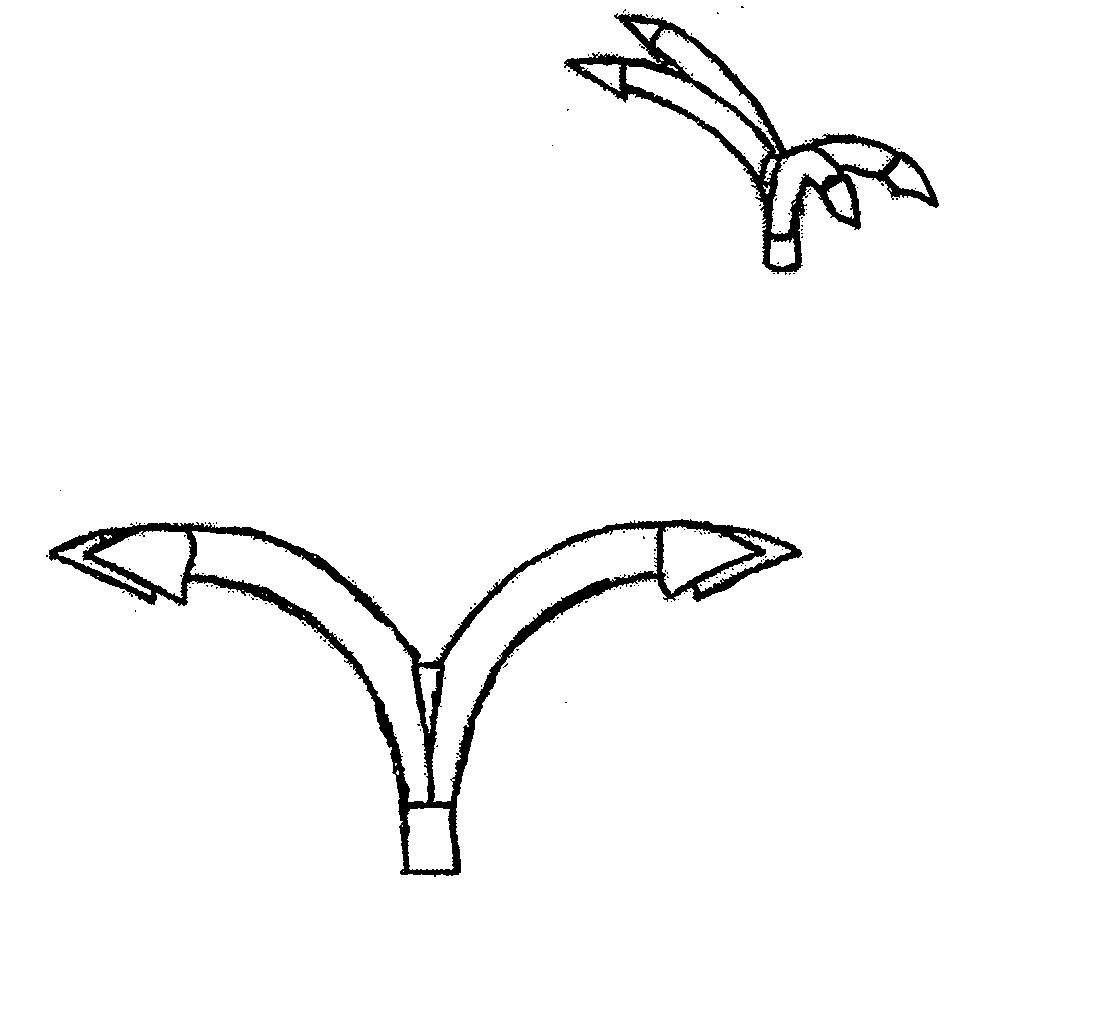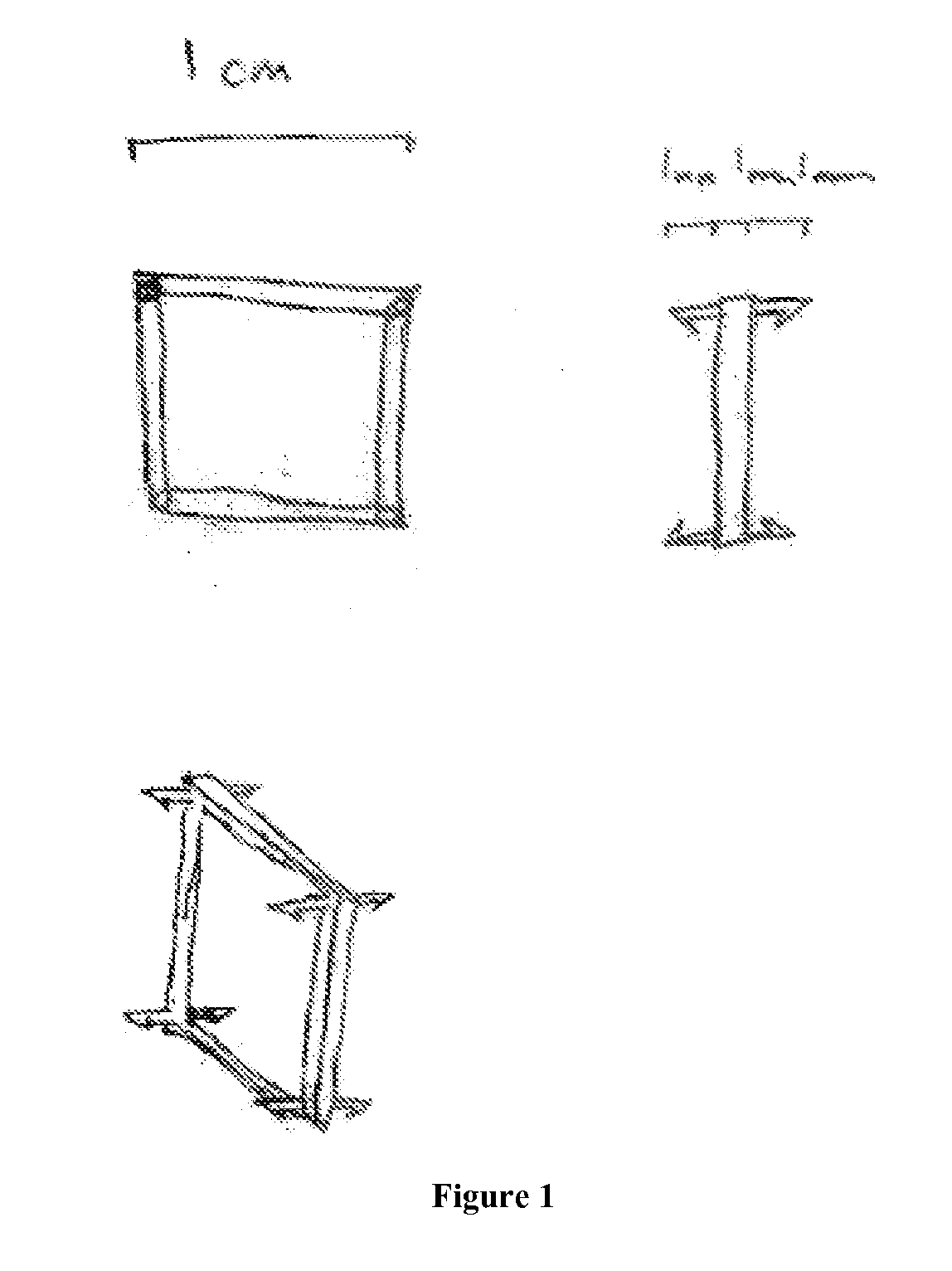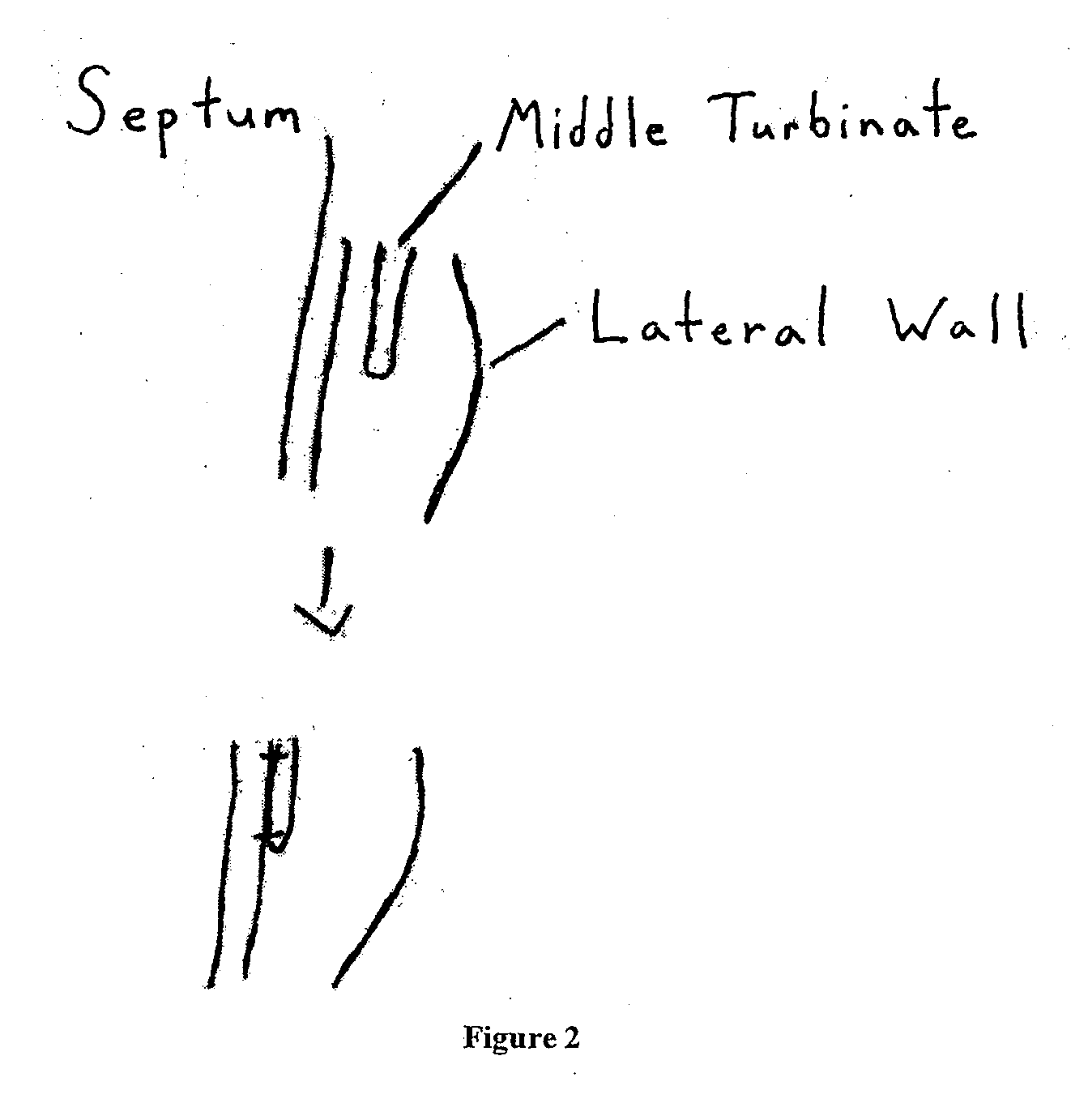Middle Turbinate Medializer
- Summary
- Abstract
- Description
- Claims
- Application Information
AI Technical Summary
Benefits of technology
Problems solved by technology
Method used
Image
Examples
Embodiment Construction
[0039] The present invention provides a system for medializing the middle turbinate following and / or during nasal or sinus surgery. The invention stems from the recognition that attaching the middle turbinate to the nasal septum, thereby drawing the middle turbinate medially would prevent the formation of adhesions between the middle turbinate and lateral wall. These adhesions are known to cause further complications post surgery including paranasal sinus blockage. The inventive system prevents the formation of adhesions between the middle turbinate and the lateral nasal wall and therefore the subsequent complications. These adhesions frequently require post-revision surgery to remove the adhesions. The invention not only provides a medical device for use in medializing the middle turbinate but also provides kits, instruments for placing and removing the inventive devices, and procedures for medializing the middle turbinate.
[0040] A patient suffering from nasal or sinus disease (e....
PUM
 Login to View More
Login to View More Abstract
Description
Claims
Application Information
 Login to View More
Login to View More - R&D
- Intellectual Property
- Life Sciences
- Materials
- Tech Scout
- Unparalleled Data Quality
- Higher Quality Content
- 60% Fewer Hallucinations
Browse by: Latest US Patents, China's latest patents, Technical Efficacy Thesaurus, Application Domain, Technology Topic, Popular Technical Reports.
© 2025 PatSnap. All rights reserved.Legal|Privacy policy|Modern Slavery Act Transparency Statement|Sitemap|About US| Contact US: help@patsnap.com



